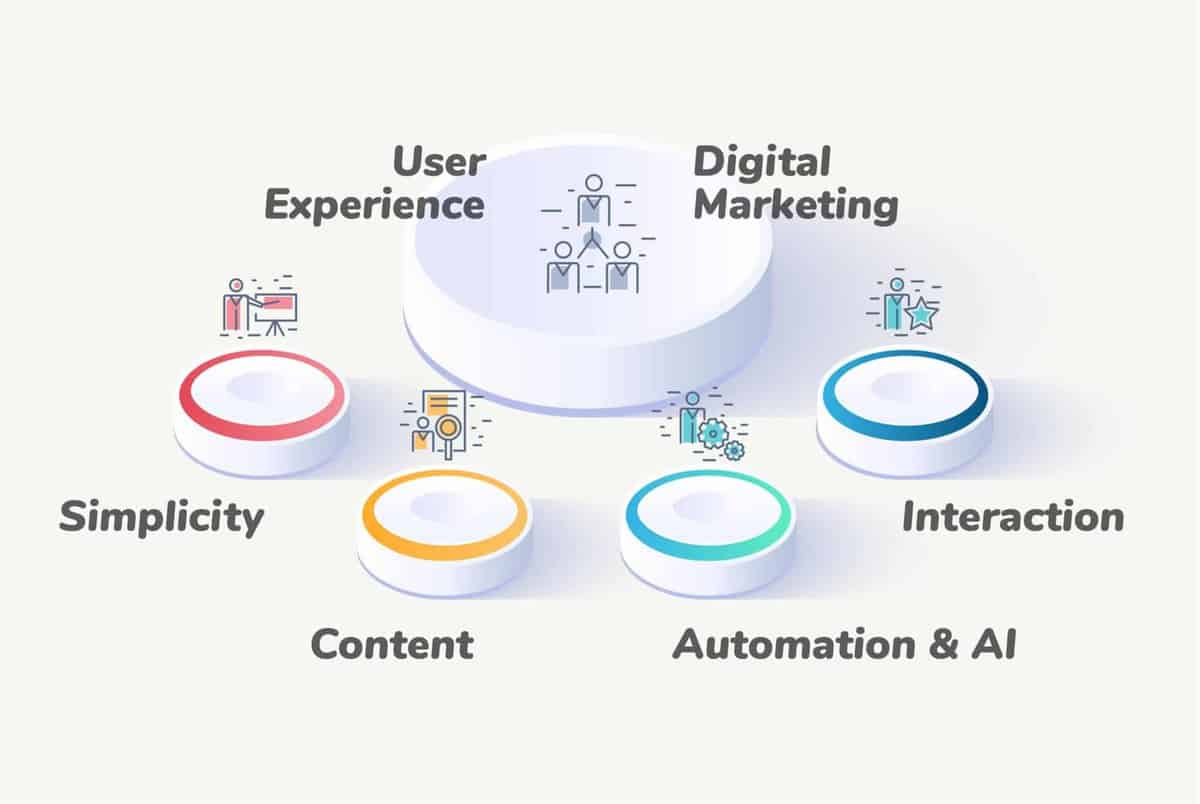In the 21st Century, the vast majority of marketing unfolds online.
While this has opened up a range of new opportunities, it can also lead to difficulties.
In order to enjoy significant success in online marketing, your business will need to impress Google’s many and varied ranking algorithms and top the charts of any search term.
There are a range of ways to impress Google and avoid penalisation of a site’s standing in a search. Regular website audits and content refreshes, and the strategic use of keywords and SERPs, are chief among these.
More and more, however, Google are basing ranking upon user behaviour – which, in turn, is linked intrinsically with user experience.
This means that your UX and marketing practices must remain aligned.
The days of separate departments with independent focus are over. Now, every element of a website must be connected and promote collaboration. Let’s take a look at how any business can align marketing opportunities with UX without breaking the bank.

1. Simplicity of concepts and interfaces
When a customer visits the online home of a business, whether to make a purchase, research a product or garner information, they want things to be kept simple.
Nobody has the time to trawl through page after page of thin copy, layered visuals, branching pages and unwelcome pop-ups to reach their destination.
Forcing this level of navigation upon a user can lead to a high bounce rate. This will impact your marketing strategy – and, by extension, your ROI.
Keeping the layout of your site user-friendly is at the heart of superior UX, especially when it comes to marketing.
Put yourselves in the shoes of a user that has never utilised your services before. They may find themselves on your site or landing page after following a social media campaign or clicking a link in an email newsletter.
Clearly, you piqued the user’s curiosity. Substandard UX will fail to hold their attention though, making your efforts for nothing. All the aesthetic splendour and skilled marketing copy in the world will serve no purpose if it cannot be found.
Ensure that your website layout is comparatively easy to negotiate. 94% of web users consider good web design fundamental to their user experience. By the same token, however, ensure that your website design appeals to a user – consciously or otherwise.
Design is at the heart of marketing, so don’t skimp on visually striking UX that helps your site stand out from competitors.
2. Content and copy
Maximise copy keywords – without compromising quality.
We claimed that design is the heart of superior UX, attracting the attention of a consumer. To stretch our analogy to potential breaking point, this makes high-quality copy the brain.
Once a user has navigated your customer needs to know that you can meet their needs. This is where enlisting the skills of a superior wordsmith to aid your marketing strategy will truly boost UX.
Keywords, and an understanding thereof, are important here. We just discussed how users do not wish to trawl your website looking for appropriate information.
By utilising the keywords that your customer base is looking for, you’ll attract eyes immediately and encourage a customer that you can offer what they need.
This is just a nibble on the marketing fishing hook, though. You’ll need something compelling to really encourage a consumer to bite hard and be reeled in.
This means that you should perform due diligence on a copywriter before bringing in external help, ensuring that you’ll receive a service consummate with your expectations.
Superior, well-written copy will reassure a customer that you are an expert in your field and can be trusted with a purchase. What’s more, it will educate as well as entertain visitors to your site.
This will improve user experience and encourage return visits. Irrelevant copy, padded with keywords and riddled with typos, sticks out like a sore thumb. It will be disregarded as such – by users and our Google overlords alike.
3. Automation through AI
Utilise chatbots – but keep a human in the loop.
It is safe to say the digital revolution is truly upon us, which has to led to the dawn of the chatbot.
Once clearly identified and much maligned, chatbots are now omnipresent throughout the online realm – including in marketing.
There is no denying that chatbots can be a great addition to any marketing campaign and boost UX.
Chatbots do not break for lunch or coffee. They do not have a long list of other customer needs to manage first. They do not leave the building at the end of a working day.
An AI chatbot can be the ultimate helpdesk employee to improve user experience, offering immediate assistance and taking orders 24/7.
To fully utilise chatbots in your UX marketing, however, pay as much attention to the word, “artificial” as you do, “intelligence.” Chatbots are only as experienced as their programming allows, and AI learns on the job.
A customer experiencing a new or unique issue may become trapped in an infuriating conversation loop, with a chatbot unable to resolve or understand the issue at hand. This explains why 86% of consumers still prefer to discuss pain points or request information from a human operative.
Combining human assistance with chatbot technology is key to effective UX marketing. Let a chatbot do the heavy lifting at the front end of the conversation. Use chatbots to record user data, learn why a customer has got in touch, and obtain a summary of the issue. From there, allow the chatbot to hand over to a human operative.
This offers consumers and staff alike the best of both worlds. Your team will be free to concentrate on more pressing issues while the chatbots handle basic tasks and queries.
When AI understanding hits a wall, however, your customer does not need to suffer. A human operative can seamlessly step in and answer any more complex questions.
This ensures the customer goes away happy – and a positive reputation is arguably the most effective marketing campaign of all.
4. Human-to-human interaction
Of course, chatbots are just one way to utilise communication as part of your marketing strategy. Effective UX encourages as much interaction as possible from the user.
This way, you can build a relationship with your customer. With luck, they will even become an ambassador for your business.
More importantly, user interaction helps you build a customer profile. This is critical to creating an effective account-based marketing approach, as opposed to a more sweeping inbound marketing strategy.
There is definitely room for both of these approaches, but account-based marketing will truly excel when paired with superior UX.
By encouraging user interaction, you can map the movements and habits of your customers.
This is akin to the world’s most cost-effective market research – especially seeing as you are learning more about consumers that are already interested in your offering. You can learn what is working and drawing interest, and what appears to be falling flat.
Encouraging interaction will also give customers the opportunity to make their voice heard. This is extremely important to modern consumers, who will look elsewhere if they feel they are being ignored or disregarded.
User interaction as part of your UX and marketing strategies will help you align your goals with those of your customers.
Surely that is the cornerstone of any successful business enterprise?

